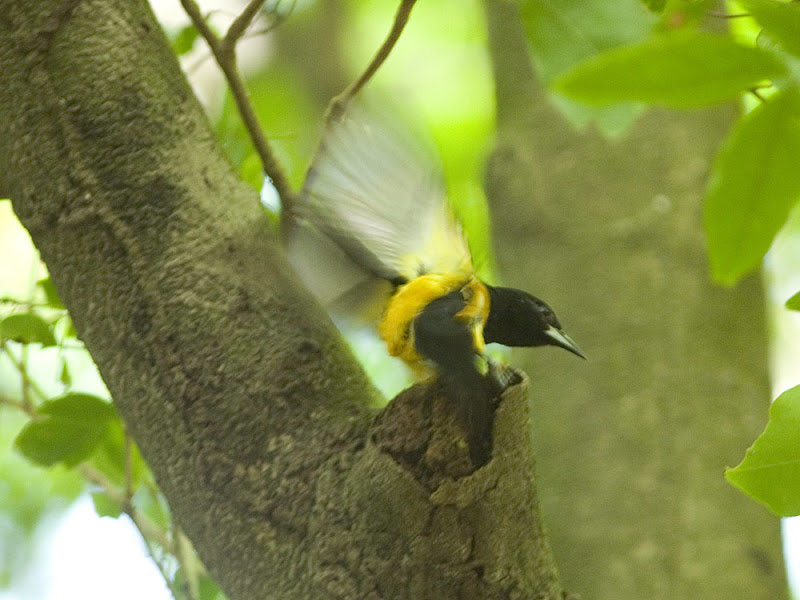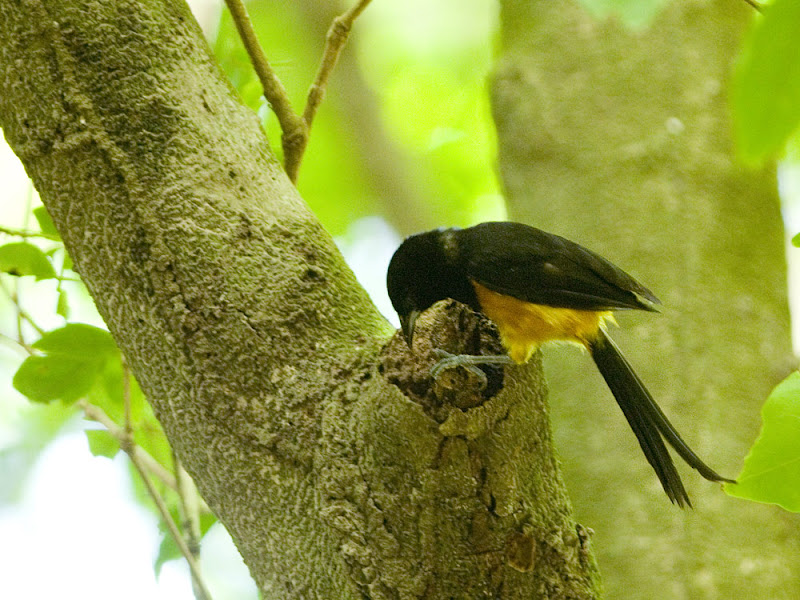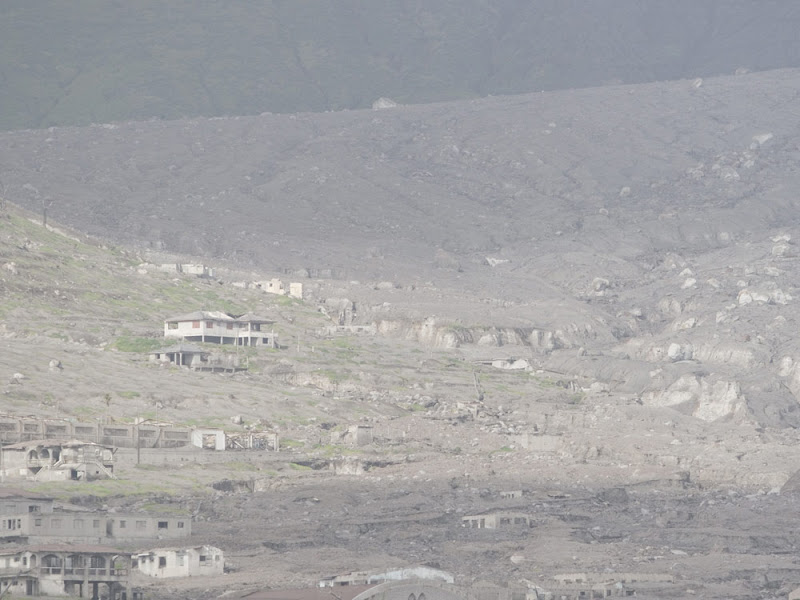After leaving Antigua (a bit delayed by rain) we headed south-west to Montserrat, home of the hemi-mythical Montserrat Oriole. Our accommodation for the three nights there was in the house of Georrge Martin of Beatles fame! He used to stay up there when his studio, Air Studios, was active, but now he and his wife come along for about a month each winter (The husband of the lovely Margaret Wilson who made our food there apparently taught Sting to windsurf while he was up there recording).
While you are pondering on me diving into GM's pool under the Caribbean sun, here are some photos...

Olveston House, George Martin's home where we had the pleasure of staying (I had Sir George's bedroom!)

Iguana grazing before he went to check out the poolside

An iguana enjoying the edge of George Martin's pool at Olveston House

Young American Kestrels in the garden of Olveston House

View south from Olveston House (the big volcano is hidden in cloud behind this smaller hill)

George Martin's Air Studios were housed in the building in the middle left of this photo (I think...)

A sort of darter, I believe

New housing in the north of the island


Long-tailed Skipper
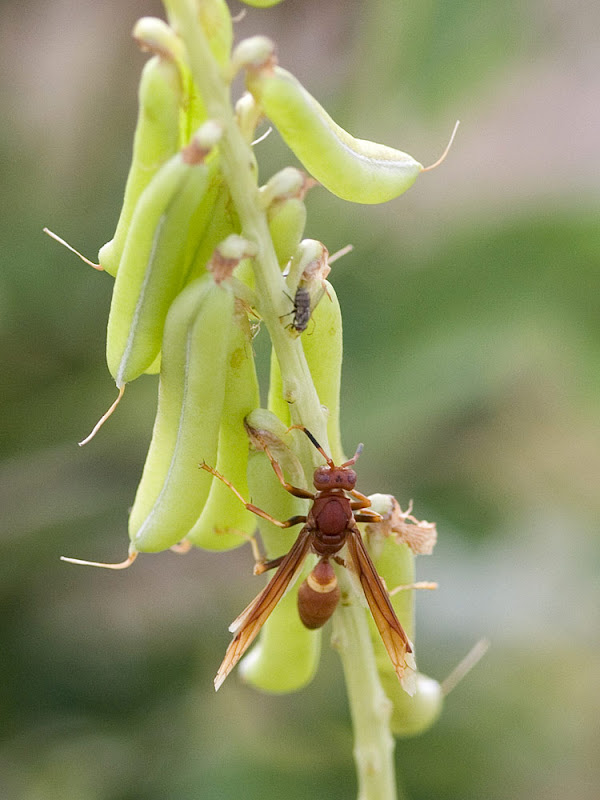
A Jack Spaniard wasp. The locals seem to use this name for all wasps we saw...

Bridled Quail-dove



A pipe-living lizard

Our first Montserrat Oriole was on our guide Scriber's car...

Trails

This bug came to visit us at Ziggy's Restaurant on our last night

Scriber congratulates his cousin Stephen Daly on yet another excellent flight shot
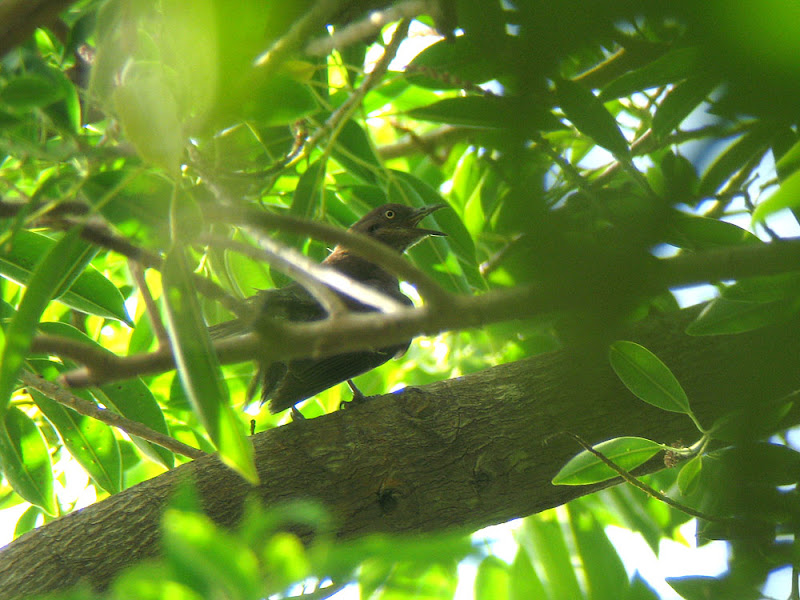
Scaly-breasted Thrasher

Some kind of spiny fruit


Brown Trembler on its nest stump
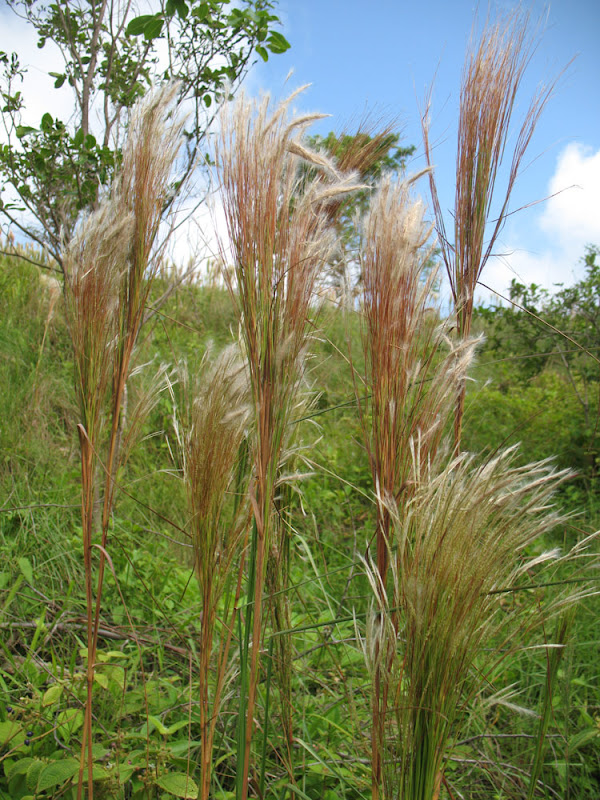
A grass

Ground orchid

Elephant ears


A grasshopper at the cliffs in the north

Scriber scans the cliffs for Red-billed Tropicbirds

There were three Red-billed Tropicbirds past these cliffs when we arrived, but they didn't reappear

Scaly-naped Pigeon. In Antigua, White-crowned Pigeons were dominant, but on Montserrat Scaly-naped Pigeons were much commoner

The rainbow of hope

Magnificent Frigatebirds

Our boat trip south to see Plymouth (see above) was with Troy of Green Monkey Dive Shop at Little Bay Beach







